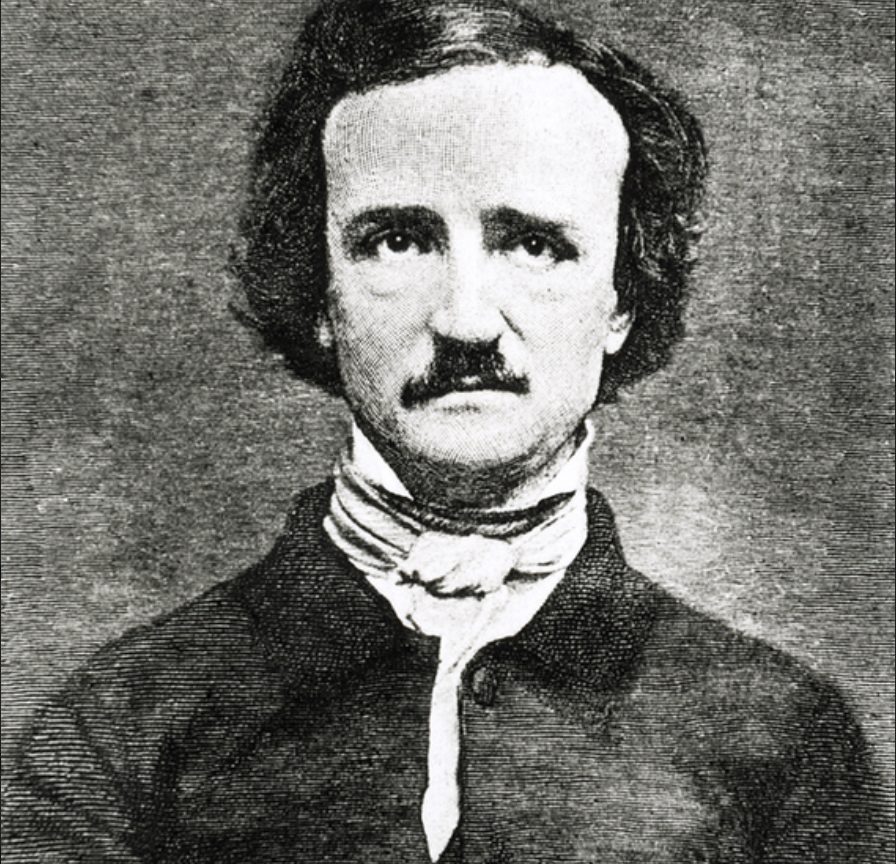By: Marin Dremock
If one has ears to hear or eyes to see, let them hear or let them read, as I recite and write the spookiest opening stanza in American poetry.
“Once upon a midnight dreary, while I pondered, weak and weary, / Over many a quaint and curious volume of forgotten lore… / While I nodded, nearly napping, suddenly there came a tapping, / As of some one gently rapping, rapping at my chamber door. / ‘’Tis some visitor,’ I muttered, ‘tapping at my chamber door… / Only this and nothing more.’”

If the opening lines of Edgar Allan Poe’s “The Raven” aren’t a dreary (I love that adjective) reflection of your college experience like they are mine, at least let it encompass the very aesthetic of Halloween, the dark academic’s favorite holiday.
“The Raven” is set in a dark chamber room with one door, one window, the bust of Athena and one “velvet-violet” armchair, in which the speaker is reading and napping in the beginning of the poem. If any room exudes Halloween, it’s this one.
How many Halloween decorations have you seen of a crow or raven sitting atop a tombstone or other marble sculpted structure? (Just say, “A lot!” because it’s true.) The Raven flies through the open window and perches atop the bust of Athena above the speaker’s chamber door. It stays there, speaking one word, “Nevermore.” Creepy.
But what’s fascinating and what brings me to describe this poem as the beginning to an aesthetic of the strange and bizarre are the following lines: “But the Raven still beguiling all my fancy into smiling, / Straight I wheeled a cushioned seat in front of bird, and bust and door…”
Although horrified, the speaker sits intently in front of the Raven and is curious as to what its single word means. The speaker ponders the Raven as they had previously pondered the books they were reading.
Doesn’t this sound like our experiences watching horror movies or reading scary stories? We are terrified, yet we attend to these phenomena because we want to know. Know what? The supernatural? The strange? That’s exactly the mystery and the aesthetic of Halloween.
Alright. If “The Raven” doesn’t aesthetically represent Halloween for you, at least let the poet and author Edgar Allan Poe do the deed.
In addition to Poe’s pioneering of the mystery and macabre short story and poem, the man was mysterious himself. It takes one to know how to write one. Almost all of the women in his life, such as his wife, mother and adoptive mother, died of tuberculosis. Most interestingly, the Poetry Foundation says, he was discovered in a state of semi-consciousness on Oct. 3, 1849 and died four days later, never having the lucidity to explain what happened during those four days.
While this is incredibly sad, it’s also incredibly on brand for Poe. For someone who writes about someone bricking a guy up in the walls of a wine vault, someone burying a heart underneath floorboards and a talking bird summoning the narrator’s lost love, it is fitting to die with some mystery and horror. Of course, also, he dies in October.
Plus, just look up a picture of this man’s face. He looks like your local mortuary business’s funeral director. It feels like he could be the unnamed narrator of every story or poem he writes.
Edgar Allan Poe and his poems and short stories are the epitome of Halloween. A close second for me is Stephen King, who I definitely feel is the present-day Poe. Authors whose minds work in scary ways bring out the best of the October holiday.
This Halloween season, celebrate by reading “The Raven,” “The Cask of Amontillado” or “The Tell-Tale Heart.” And don’t forget to make sure the ones you love don’t contract tuberculosis.
Sources: PBS, The Poetry Foundation
